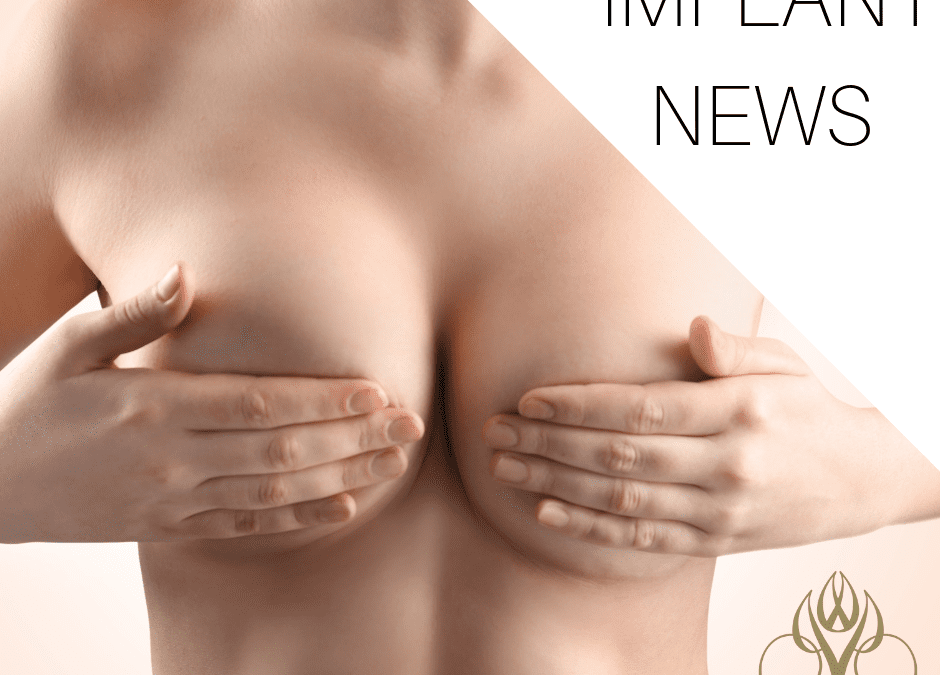We would like to assure our clients that we are offering discounted Breast checks with Dr Widdowson, due to the current Media released with certain implants.
**only for limited time for previous patients**
We are more than happy to assist new clients concerned about their breast implants but must have an full hour consultation to ensure a thorough history is taken.
We are currently not using the implants mentioned currently in the media and Dr Widdowson advocates the use of
Smooth Implants at The Lotus Institute.
Our staff are happy to check records for previous clients to let them know what Brand of implants they do have.
As you may imagine we have had an influx of calls and appreciate your patience in retrieving your information.
For the latest media releases & information with TCA on the Australian government website follow the link bellow.
https://www.tga.gov.au/alert/breast-implants-and-anaplastic-large-cell-lymphoma
To follow one of our clients- Kate Waters- follow link bellow;
Our caring staff are happy to assist you with your queries and help you to your consultation with Dr Widdowson.
Media release from : Australian Society of Plastic Surgeons
MEDIA RELEASE – 28TH August 2017
Breast implant associated-Anaplastic Large Cell Lymphoma (BIA-ALCL)
The Australian Society of Plastic Surgeons and the Australian Society of Aesthetic Plastic Surgeons urges women with breast implants to be vigilant in monitoring for any changes or swelling in their breasts and to contact their doctor if this occurs.
Breast implant associated-Anaplastic Large Cell Lymphoma (BIA-ALCL) is a rare cancer that can be effectively treated if detected early.
The ASPS and ASAPS are concerned there may be confusion in the community surrounding BIA-ALCL and therefore seeks to clarify the key known facts.
Facts associated with BIA-ALCL 1. It is a cancer of lymphatic cells and a form of Non-Hodgkin’s Lymphoma 2. It is not a breast cancer 3. It occurs in association with breast implants and to date exclusively with exposure to textured implants (i.e. No case has been reported with exposure to smooth implants alone). 4. It occurs in women who have had implants for both cosmetic and reconstructive indications 5. It takes an average of 7-10 years after implant insertion before it develops 6. The commonest presentation is a fluid swelling around the breast implant and in the space between the implant and breast implant capsule – late seroma. The diagnosis of the tumor is made by examination of the seroma fluid. 7. Early stage disease is curative with surgery alone. 8. Disease which has spread through the capsule, forming a mass or which has spread to local lymph glands carries a worse prognosis
Risk
The most accurate risk published to date is from a detailed study of numerator and denominator in Australia and New Zealand. This showed that the risk for implants with high surface area texture (biocell, Alllergan and polyurethane, Silimed) were around 10 times higher (1 in 4000 to 1 in 7000) compared with implants with lower surface area texture (1 in 60000 for siltex Mentor). The risk was calculated only for companies that complied with a request for provision of sales data. We did see ALCL arising from other implant manufacturers, but were not able to calculate risk due to their refusal to supply data for analysis.
The study also identified clusters of multiple cases arising from the same practice. These clusters are currently under investigation, with the consent of the center and/or surgeon, and there is insufficient evidence presently to comment as to likely causative factors.
Causation
Recent news articles suggested that there is a link with cut-price providers. There is no such link that has been established to date by analysis of evidence.
A unifying theory was proposed by the ANZ epidemiology paper and has become widely accepted worldwide as the best explanation for factors that cause BIA-ALCL.
The unifying theory cites four inter-related factors 1. Textured implants (with a higher risk for high surface area textures) 2. Bacterial contamination at the time of surgery to reach a threshold to cause inflammation 3. Patient genetic predisposition 4. Time – for the process to develop
Bacteria have been identified in association with these tumours, similar to the association between gastric lymphoma and Helicobacter pylori.
Breast implant surgery in Australia
The exact numbers of breast implants in women is hard to define however last year about 1.5 million were inserted worldwide (International Society of Aesthetic Plastic Surgery, ISAPS) and about 150,000 had implants removed. Implants are not life devices and all will need revision in due course. The commonest reasons for revision are capsular contracture, implant migration, poor aesthetic result, size change and rupture. Different types of implants perform differently, give different outcomes and have different relative risks of these complications.
Conservatively there are 30 million women (60 million implants) in the world with textured implants. There are 388 independent confirmed case of BIA-ALCL. 55 confirmed cases in Australia. There are 12 deaths worldwide with many of these occurring before treatment principles were better understood. 3 of these deaths were in Australia. The risk for Australian women of breast cancer is about 1:8. These are separate diseases.
We support the maturing of the Australian Breast Device Registry as the best way to prospectively collect outcome data following breast implant surgery.
Recommendations
All patients undergoing breast implant surgery must provide informed consent that includes a discussion of risks of BIA-ALCL
Implant selection should take into account what the patient already has, what the goals are, the patients lifestyle and the risks relative to various implant options.
Implant specific risk should be discussed in the context of overall benefits of a particular implant type and/or texture.
Routine implant removal is not indicated for asymptomatic women with breast implants including textured implants.
All women with implants who note changes in their breasts should seek advice. The overwhelming majority will not have BIA-ALCL.
We recommend the use of anti-bacterial strategies (the 14 point plan) to mitigate against the risk of bacterial contamination of implants at the time of implant insertion. These steps have been shown to reduce the risk of capsular contracture and re-operation. They may also (as supported by the unifying hypothesis) reduce the risk of developing BIA-ALCL.
Media Contact: Edwina Gatenby 0402 130 254
To read the full TGA update: www.tga.gov.au
For more information on BIA ALCL: www.plasticsurgery.org.au or www.asaps.org.au






